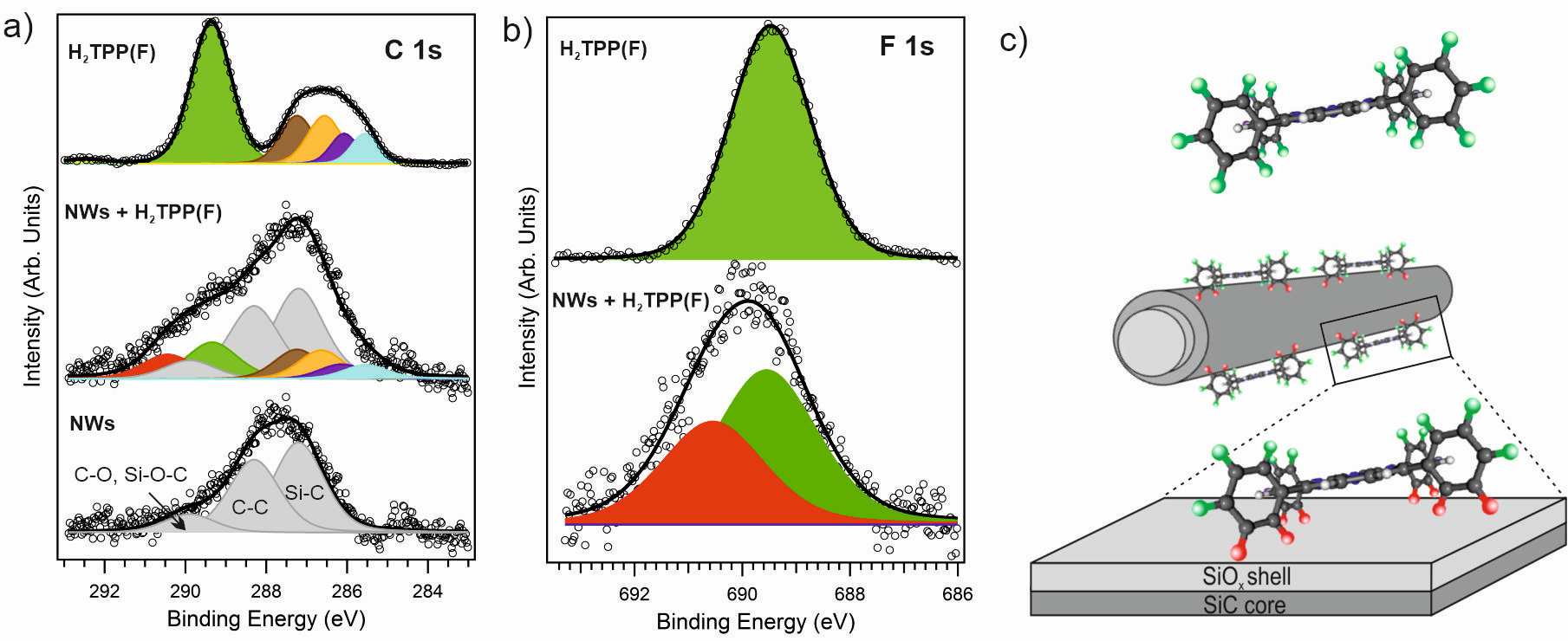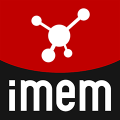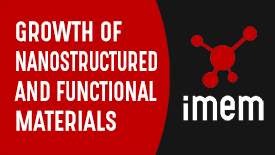![]() FOR MORE INFORMATION: Marco V. Nardi - +39 0461 314849 - marcovittorio.nardi@imem.cnr.it
FOR MORE INFORMATION: Marco V. Nardi - +39 0461 314849 - marcovittorio.nardi@imem.cnr.it
We grew and characterized a new hybrid nanosystem that is constituted by core-shell SiC/SiOx nanowires (NWs) grown via CVD and functionalized with a porphyrin derivative for potential applications in the biomedical field. We used tetrakis(pentafluorophenyl)-porphyrin (H2TPPF), a molecule commercially available and with an interesting structural conformation (see figure below). The presence of the highly reactive fluorine atoms located in the peripheral position of the molecule ensures a strong interaction between the organic molecule and the NWs’ SiOx shell. As demonstrated through our comprehensive analysis, the obtained system is highly stable, even without inserting additional linker to anchor the molecule on the inorganic nanostructure. Moreover, the developed hybrid nanomaterial demonstrates the capability to generate singlet oxygen when irradiated by X-rays, making it attractive for applications in photocatalysis and in photodynamic therapy (PDT) for cancer. Indeed, the system can be suitable as photosensitizer in X-ray excited PDT, able to treat wide and deep tumors.

"Functionalization of SiC/SiOx nanowires with a porphyrin derivative: a hybrid nanosystem for X-ray induced singlet oxygen generation" – R. Tatti et al. - Mol. Syst. Des. Eng. 2 (2017) 165 - https://doi.org/10.1039/c7me00005g








